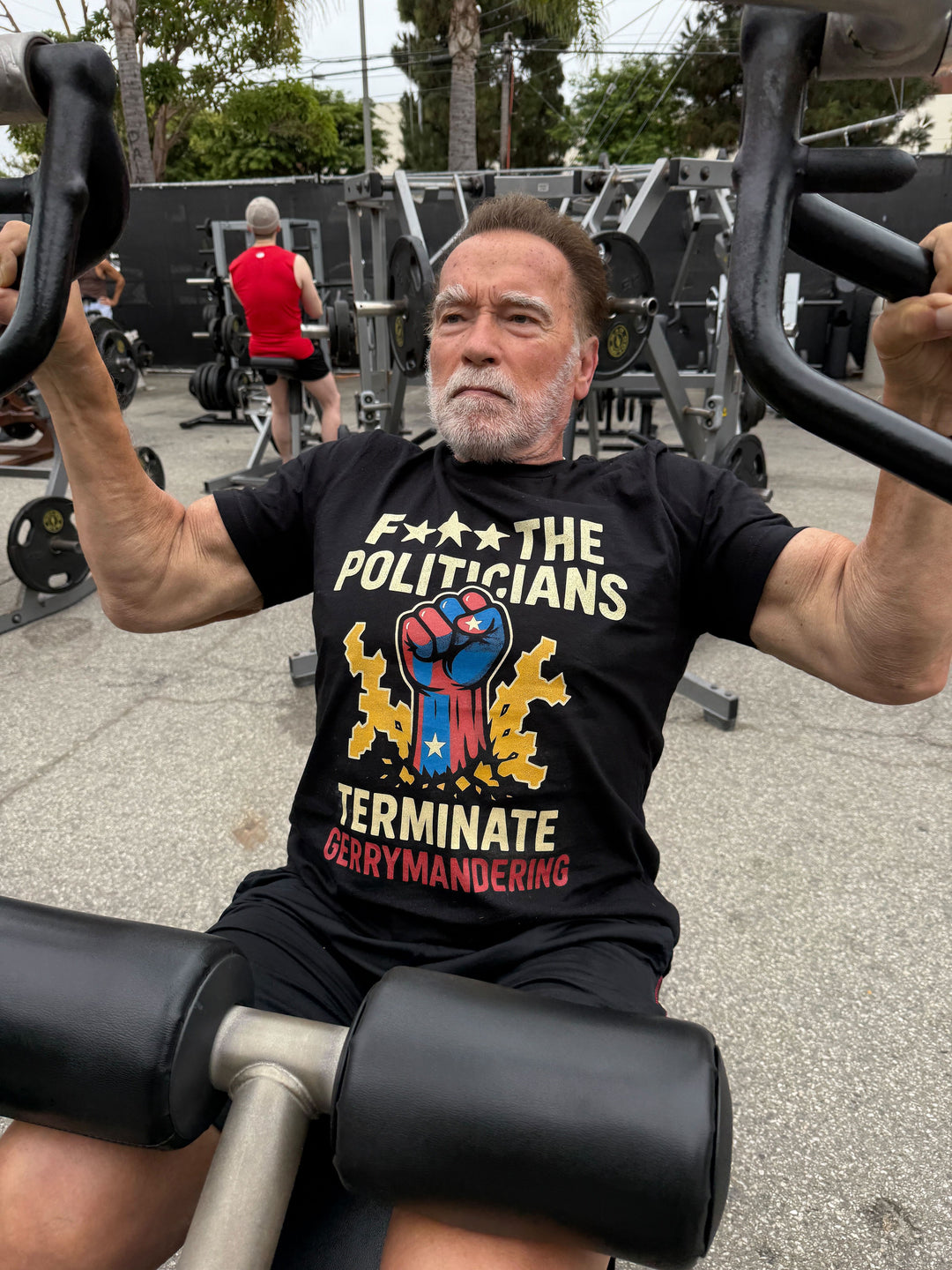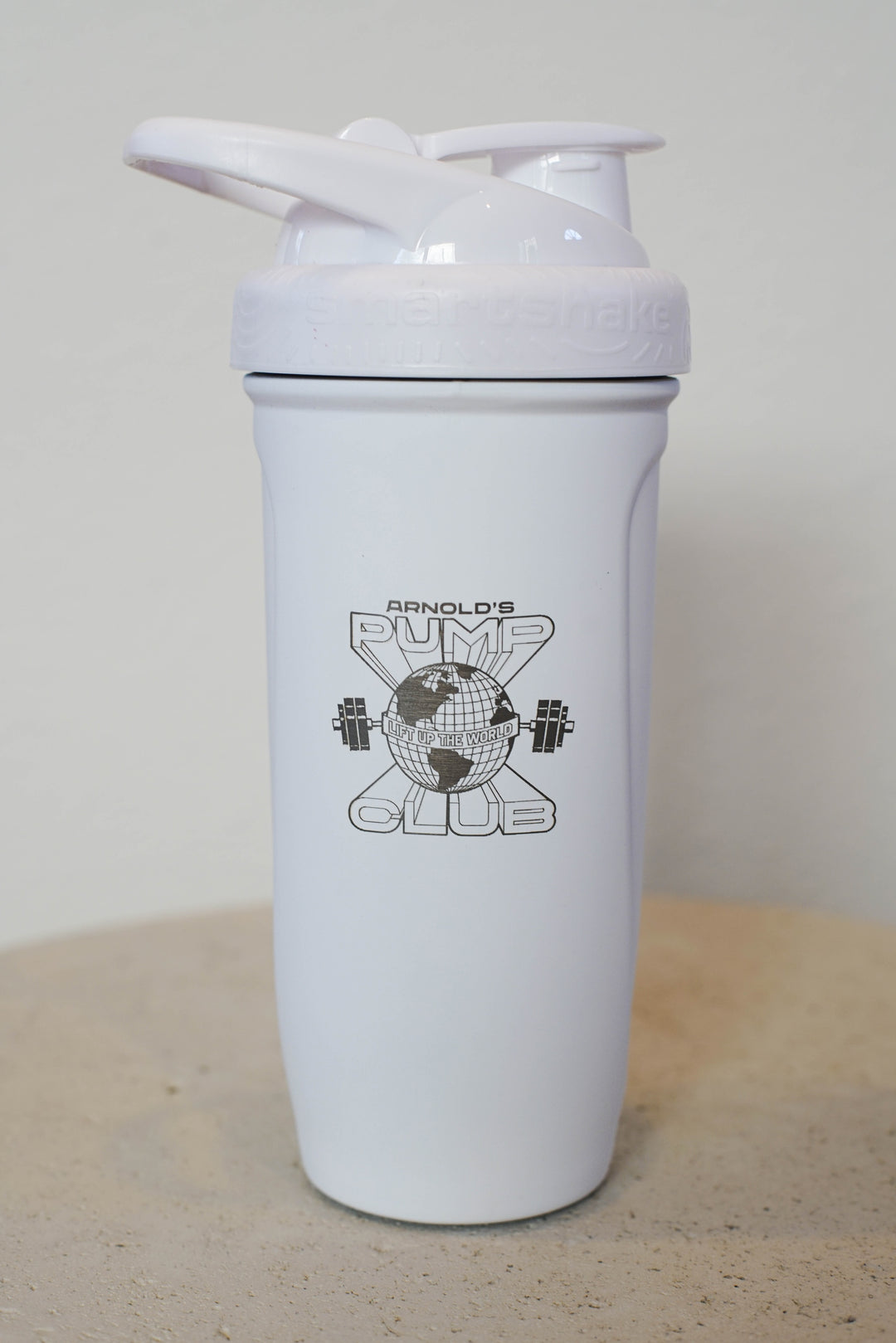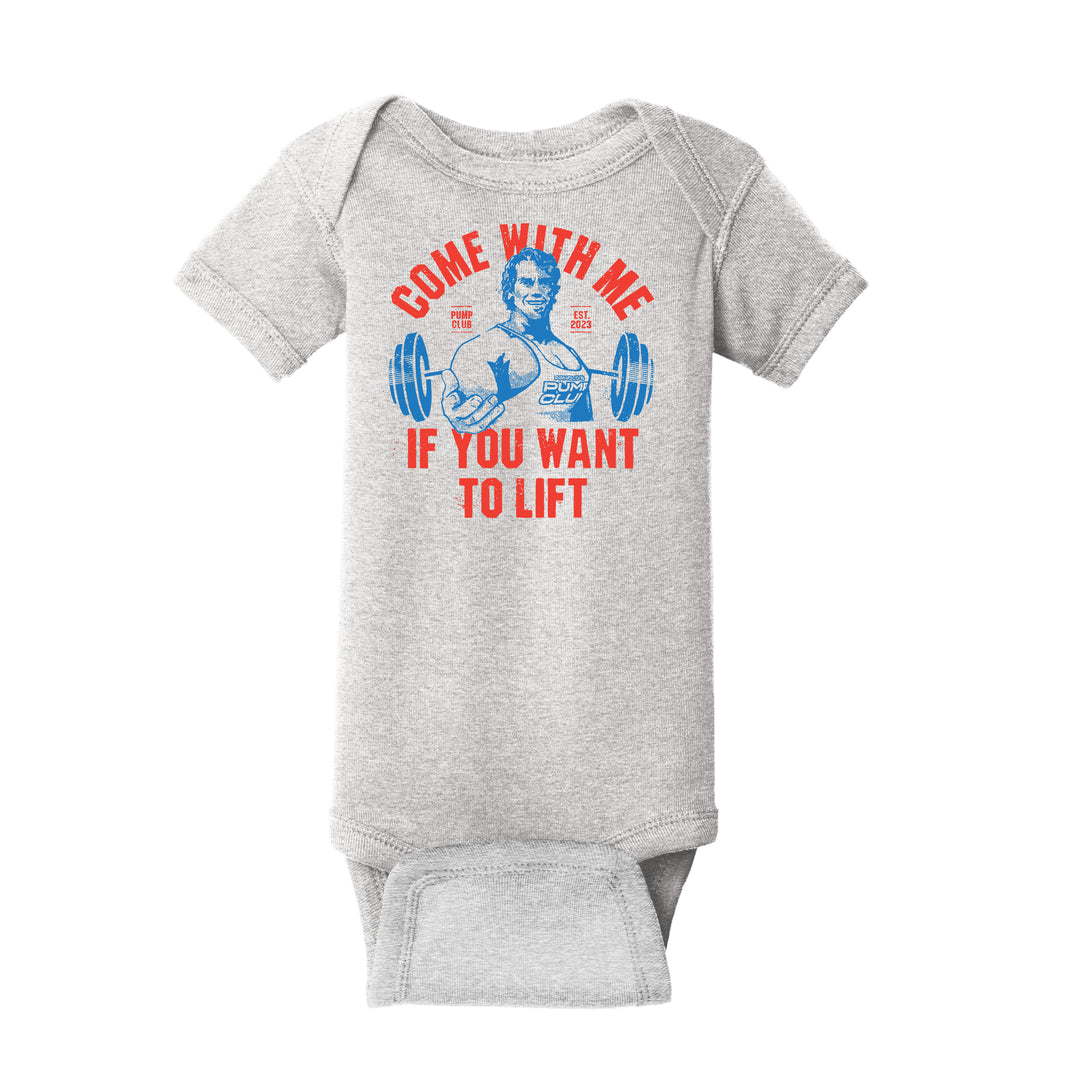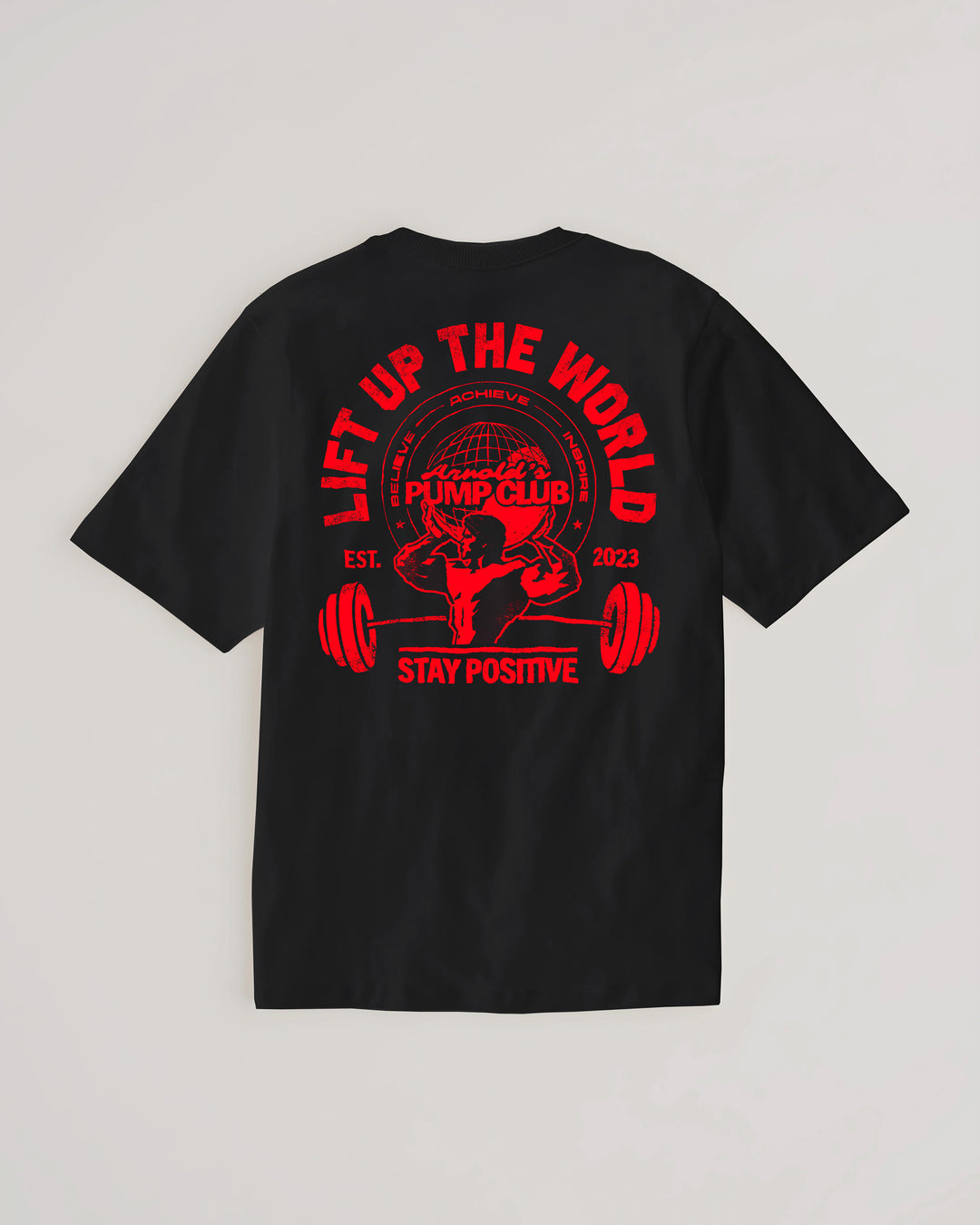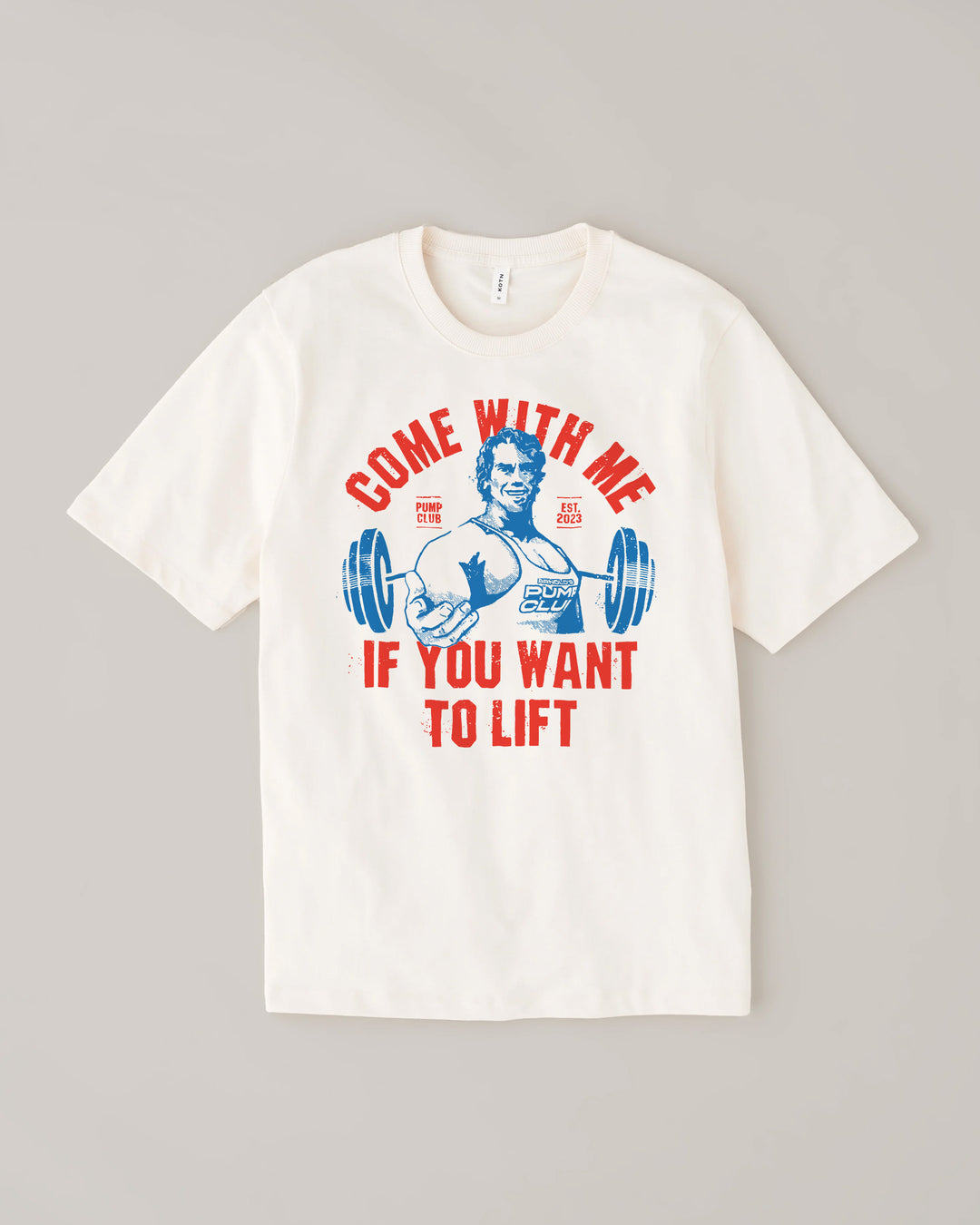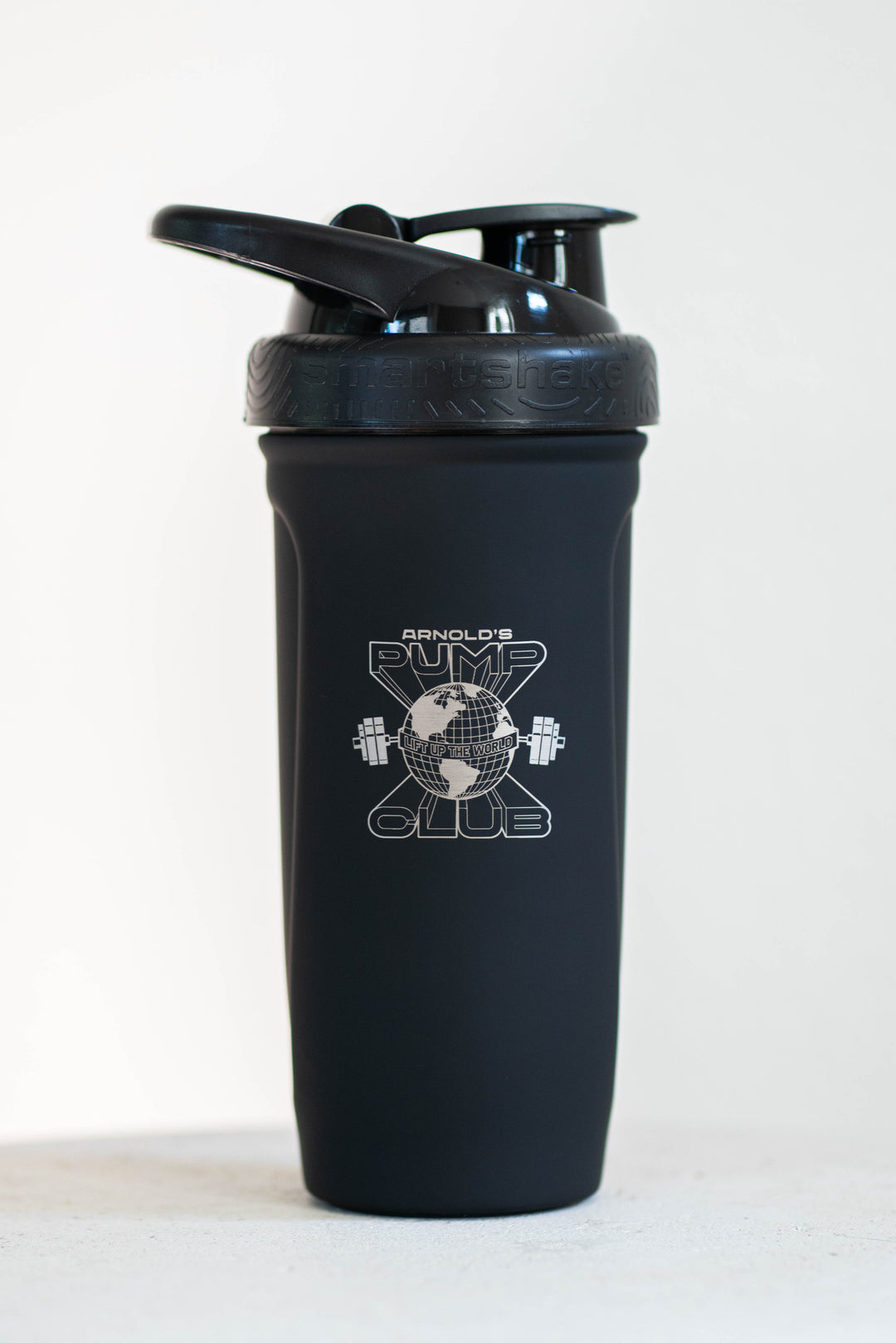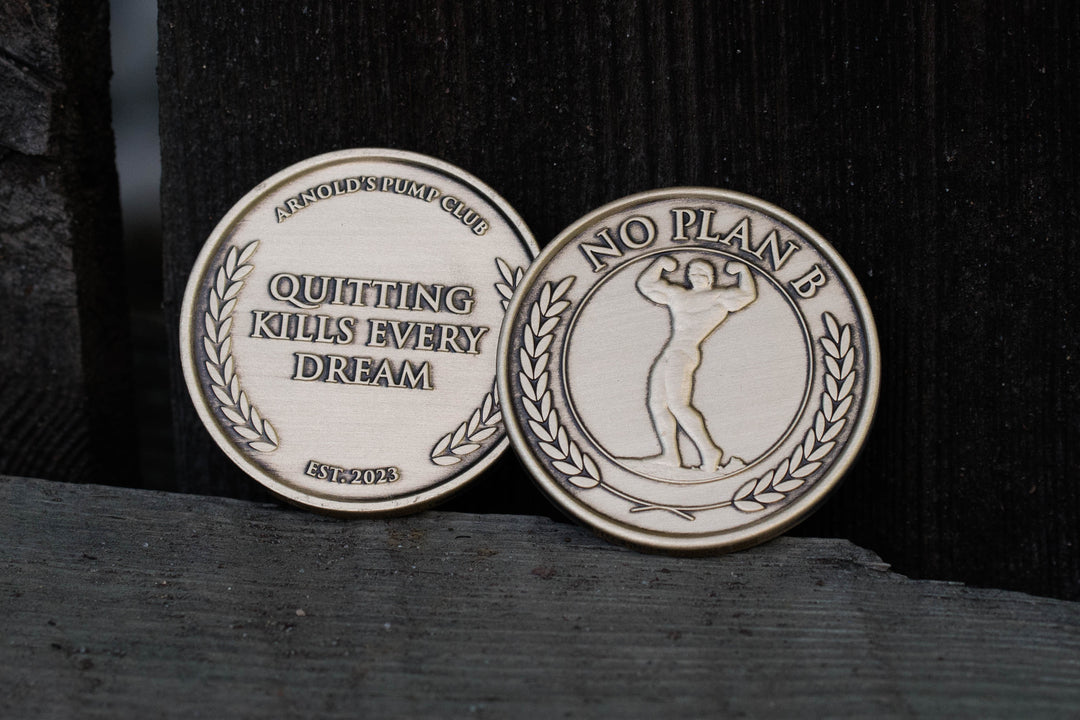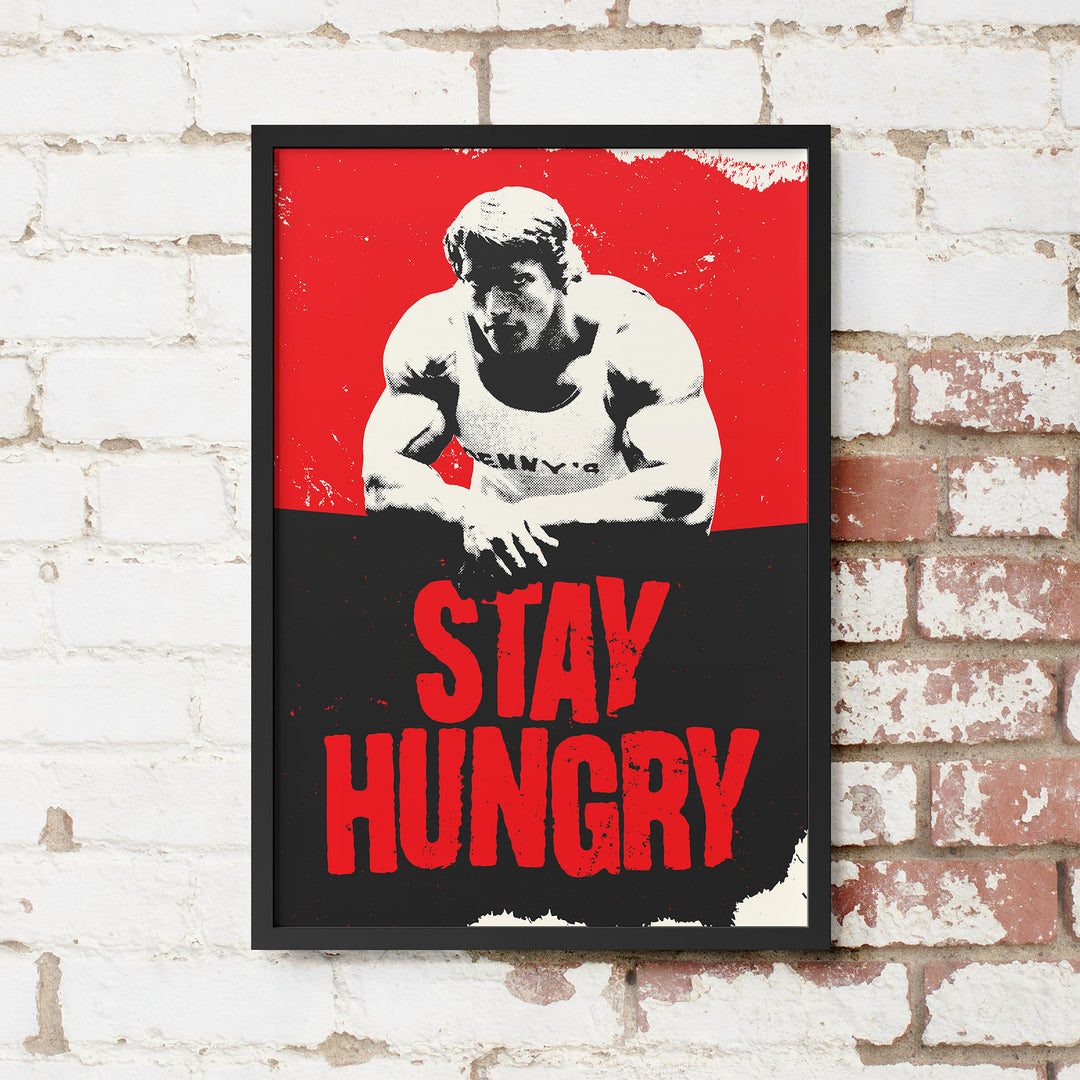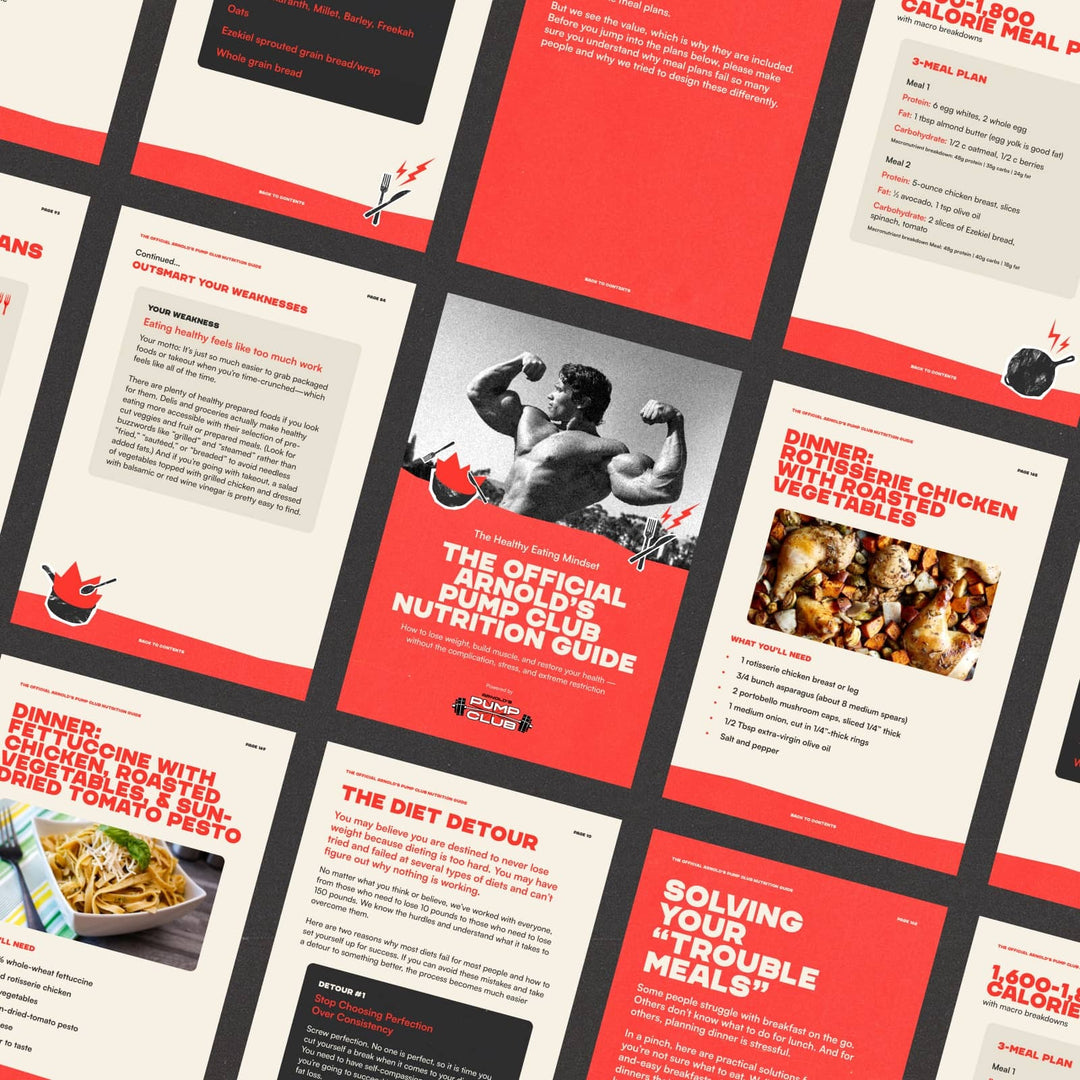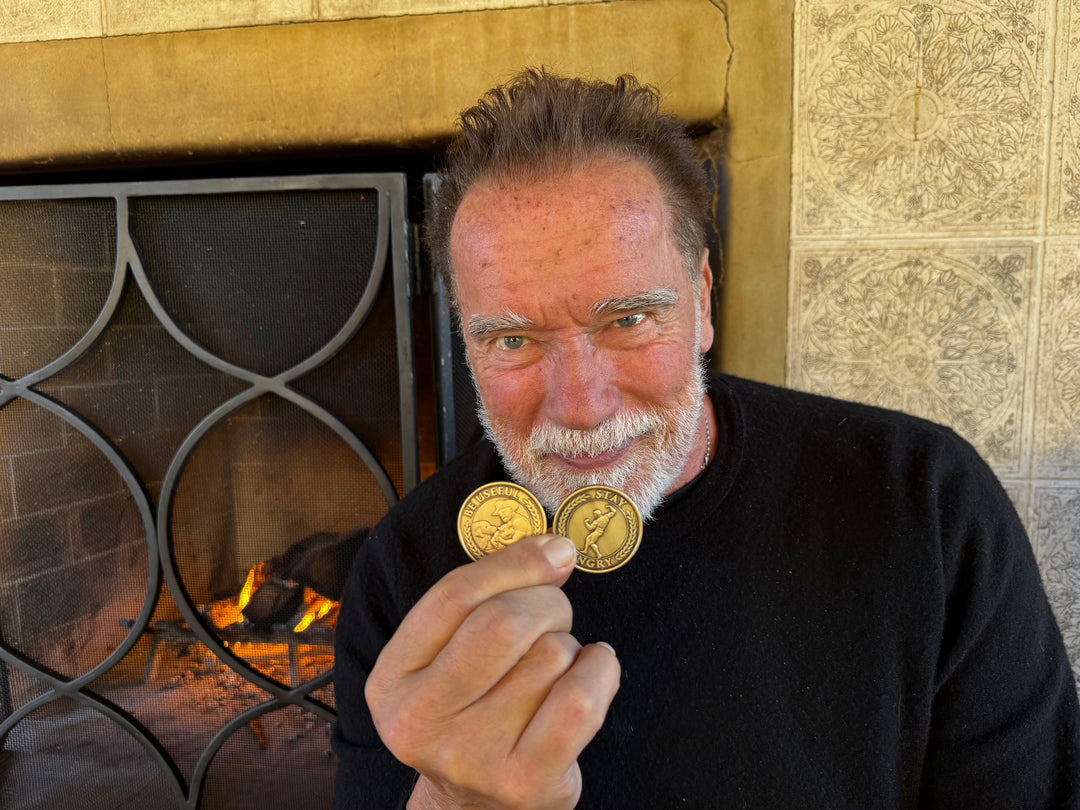Welcome to the positive corner of the internet. Every weekday, we make sense of the confusing world of wellness by analyzing the headlines, simplifying the latest research, and offering quick tips designed to make you healthier in less than 5 minutes. If you were forwarded this message, you can get the free daily email here.
Today’s Health Upgrade
Monday motivation
How to become anti-fragile
Jumpstart your week
-
Workout of the week
Arnold’s Podcast
Want more stories from Arnold? Every day, Arnold’s Pump Club Podcast opens with a story, perspective, and wisdom from Arnold that you won’t find in the newsletter. And, you’ll hear a recap of the day’s items. You can subscribe on Apple, Spotify, Google, or wherever you listen to podcasts.
Arnold’s Corner
Monday Motivation
This week, we head into the final quarter of 2024.
It’s a great moment to look back at your year and also to realize you still have three months to make this year whatever you want.
This is why I love having a newsletter and an app.
I know from your emails that some of you had a great January through March, and then you fell off from your fitness journey.
I’ve met many people in the Pump app who started in April and had a great summer before they told me they slid backward the last month.
I have also heard from the people who signed up in July and are just hitting the end of their first three months. They’re still filled with motivation.
One thing I have learned from running the Pump Club is that people join with what they expect to be endless motivation. And, about three months later, thousands of them wonder where it went. They can’t get going any more — until we help them find what was missing and get them back on track. And that’s what I want to share with all of you today.
I’ve talked a lot of times about how if motivation is what you seek, you will fall short. Momentum is what you need.
And momentum means moving forward, like a Terminator. You have to become a machine.
You have to build a routine. And that requires four big principles:
Purpose: You know the importance of your vision. You know why you are doing this. Maybe you got bad news from your doctor. Maybe you have a vacation coming and want to look your best. Maybe you just want to feel better every day. When you decide to start training or walking 7500 steps a day, you have all the fire in the world. Purpose is what helps you take action, and it’s what gives you that initial boost of motivation. But your motivation, based on everything I’ve seen, has less than a 20% chance to keep you going beyond three months. That’s where the other rules kick in.
Celebration: When you hit your step goal every day, you have to celebrate yourself. When you eat vegetables and lean proteins after years of eating crap, you have to celebrate yourself. When you lose a pound in a week, you have to learn to celebrate. If you don’t learn to celebrate every single day, when that motivation runs out, you won’t have the internal motivation to keep going. You have to give yourself credit. For me, that means keeping tally marks when I’m building a new habit like walking more every day. Every day, I mark off my walking — that’s a win. I’ve seen so many people who give up when they’re making progress because they think the progress isn’t enough. I can’t imagine they think losing a pound a week is a failure; they just have not learned to celebrate small wins because they haven’t learned small wins compound and build up over time, just like investments. A pound a week can make your vision seem impossible when you have a lot of weight to lose, but the person who can learn to celebrate those “small victories” loses 100 pounds in 2 years.
Honesty and accountability, with a little bit of forgiveness: It is human nature to protect ourselves. We all have bad days, bad weeks, and sometimes bad months. It is important to be honest with yourself but also to forgive yourself and move on. You had a stressful day and ate too much? That is today’s screwup. It does not stop you from eating better tomorrow. You missed a workout? Today’s problem. Tomorrow you won’t miss. You’re sick and have a few bad days, or like me, a pacemaker surgery that means 6 weeks off? As soon as you’re ready, you get back on track.
The final rule is that you are never finished. You have to realize you’re building new habits for the rest of your life, not to lose the weight or gain the strength — just to go back again.
You might recognize the pattern I see in so many of the emails and app messages I get. You start out just filled with fire. This will be the time you finally make a change. And then three months later, the fire is gone.
Let me tell you: you are not alone.
Learn to celebrate yourself. Learn to be honest with yourself — and forgive your failures and move forward. Learn that you can never stop.
Real health is never a three-month change, no matter how many online influencers and companies sell quick transformations. It is a lifetime commitment.
I’ve been training for more than 60 years. There is never a day that I will stop.
I have traveled and missed a day. I’ve had days where I ate whatever I wanted. I’ve had heart surgeries that shut me down, but I just got back on track.
Every time. Like a Terminator.
As you head into the last quarter of the year, I want you to use these principles to get back on track if you’ve fallen off and to keep going if you’re still at it.
Celebrate yourself when you win.
Be honest with yourself, learn, and move on when you fail.
Realize no temporary change exists. You have to commit for life.
I’ve seen so many stories of people on these big weight loss shows on TV who lose a hundred pounds, and then a few years later, they’re back to where they started.
But I’ve also met people in the app village who lost a hundred pounds and have kept it off, as well as some who have lost over a hundred pounds and aren’t finished. It’s working for them because they know this isn’t a quick transformation.
It’s a life transformation.
Real health will never come to you through motivation or quick fixes.
It will come when you learn that those small wins build up over time. Celebrate all of them, and get back on track immediately when you fail.
I laugh every time someone asks me when I’ll stop training now that I’m 77.
Why would I ever stop something that makes my life better?
They think you have to give up at some point in your life.
They don’t realize that living a better life is a lifetime commitment, not a one-quarter commitment.
You have a good day, then a good week, then a good quarter, then a good year — then you just keep going.
As you head into the last quarter of this year, I know you’re going to be tempted to say, “I’ll just start in January.”
Just use these principles and do something now.
Longevity
How To Become Anti-Fragile As You Age
Do we feel old because we age…or because we stop using our muscles?
Research suggests that anabolic resistance—or when muscles become less responsive to exercise and protein—occurs primarily because of a lack of activity, not automatically due to old age.
For decades, muscle loss and body breakdown were assumed to be an inevitable part of aging. It’s why older adults tend to need more protein to stimulate and maintain muscle. When you’re younger, 25 grams of protein maximizes muscle protein synthesis for up to six hours. But as you age, the same amount of protein doesn’t have the effect.
However, newer research finds that we lose it when we don’t use it.
Instead of aging causing your muscles to lose their magic, the lack of physical activity reduces your muscles' ability to respond to protein intake and exercise, accelerating muscle loss.
Regular resistance training can help counteract this resistance. The study found that even in older adults, regular exercise significantly improves muscle protein turnover, can restore sensitivity to protein intake, and makes it easier to maintain — and build — muscle.
According to some research, intense weight training performed at least three times per week for at least 30 minutes using 60 to 80 percent of the maximum weight you can lift can help fight against anabolic resistance and keep your body strong and resilient.
If you need a program to keep your body from fighting against you, check out today’s workout of the week.
Health
Jumpstart Your Week
Some Success, Some Failure, and A Call to Action
We love this message from Brian Koppelman, co-creator of Billions and the co-writer of Rounders, Oceans 13, and much more.
Brian is an amazing example of proving it’s never too late to get started, get stronger, and get smarter about the journey to better health.
What We’re Reading: Tren Is The Trend
File this under “Bad ideas brought to life by social media.” We don’t care how much muscle it can help you build or how much fat it burns. Tren is a dangerous drug with far more downside than upside.
The 8-Minute Brain Boost
Next time your brain feels slow and stuck, a little bit of sweat can supercharge your mind.
A recent study found that an 8-minute intense workout can increase the chemical reactions that improve brain health and improve focus, creativity, and memory.
If you want to replicate the results of the study, the participants did the following:
3 minutes at 85 percent of maximum intensity
1 minute of rest
2 minutes at 95 percent of maximum intensity
1 minute of rest
1 minute at 100 percent of maximum intensity
If you don’t want to push yourself as hard as possible, the scientists found that longer, slower workouts (about 20 minutes at 65 percent) also boost your brain, although it’s not as significant as higher-intensity exercise.
Fitness
Workout Of The Week
Last week, we shared a workout that used supersets to do twice the work in half the time. You emailed us to let us know that it gave a fantastic pump and everyone, from beginners to advanced, loved the design, time-efficient approach, and challenge.
So this week, we decided to double down and give you another superset workout—similar in design but different in exercises. Remember, the most effective way to superset exercises is to combine opposite muscle groups. So you might do a chest exercise followed by a back exercise and then rest.
In this workout, you’ll combine three different supersets to hit every major muscle group, but in a fraction of the time. Do all the sets in each superset before moving to the next exercise pairing. Once you’ve completed all three groups, your workout is done.
Superset 1
Incline dumbbell press 3 sets x 5, 5, 7 reps
Chest-supported dumbbell row 3 sets x 5, 5, 7 reps
Rest 2 minutes
Superset 2
Rear-foot elevated split squat: 3 sets x 6, 8, 10 reps/leg
Hamstring walkout: 3 sets x 10-20 reps
Rest 2 minutes
Superset 3
Incline biceps curls: 3 sets x 6,8,10 reps
Pushups: 3 sets x AMAP (as many as possible) reps
Give it a try, and start your week strong.
—
Publisher: Arnold Schwarzenegger
Editors-in-chief: Adam Bornstein and Daniel Ketchell














